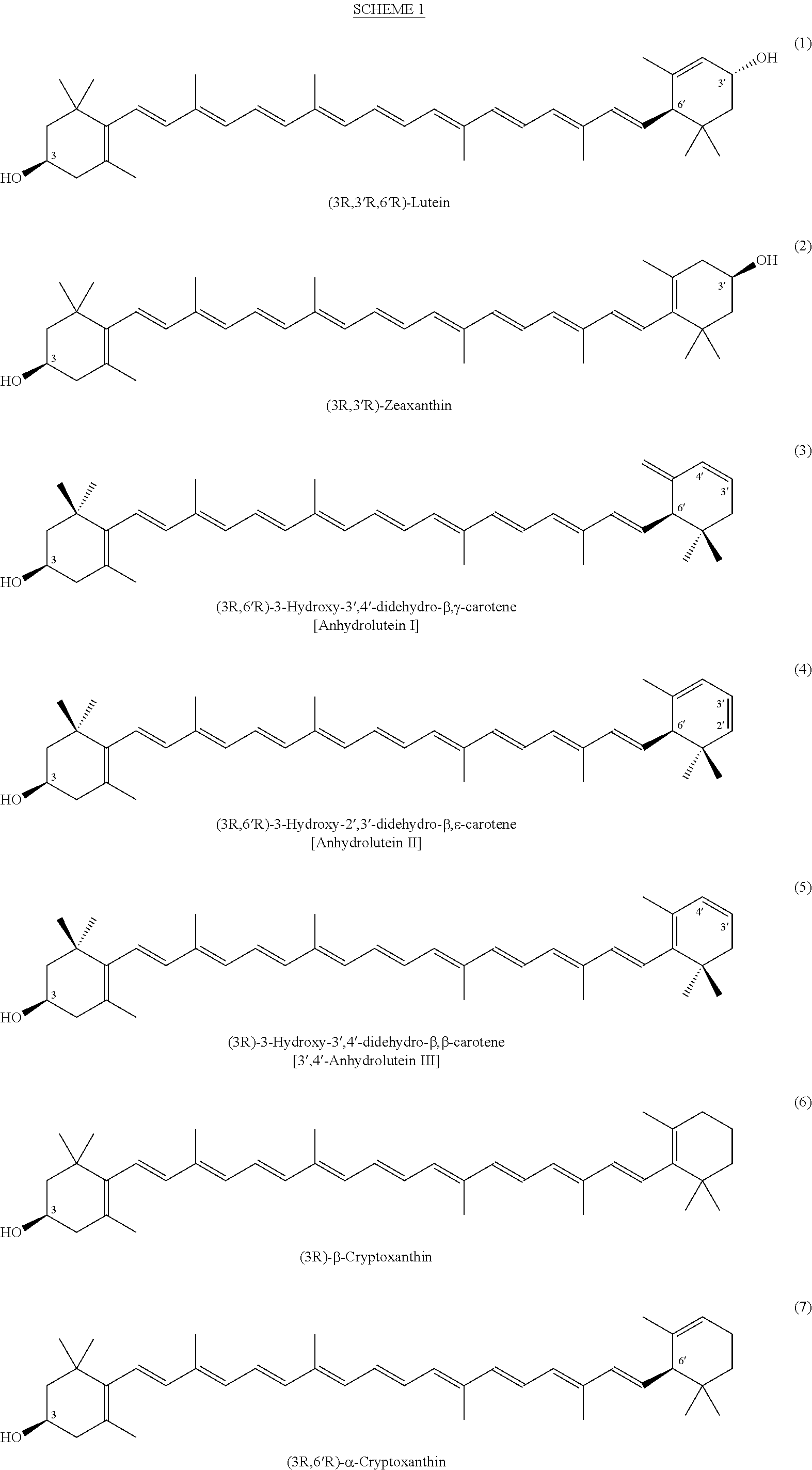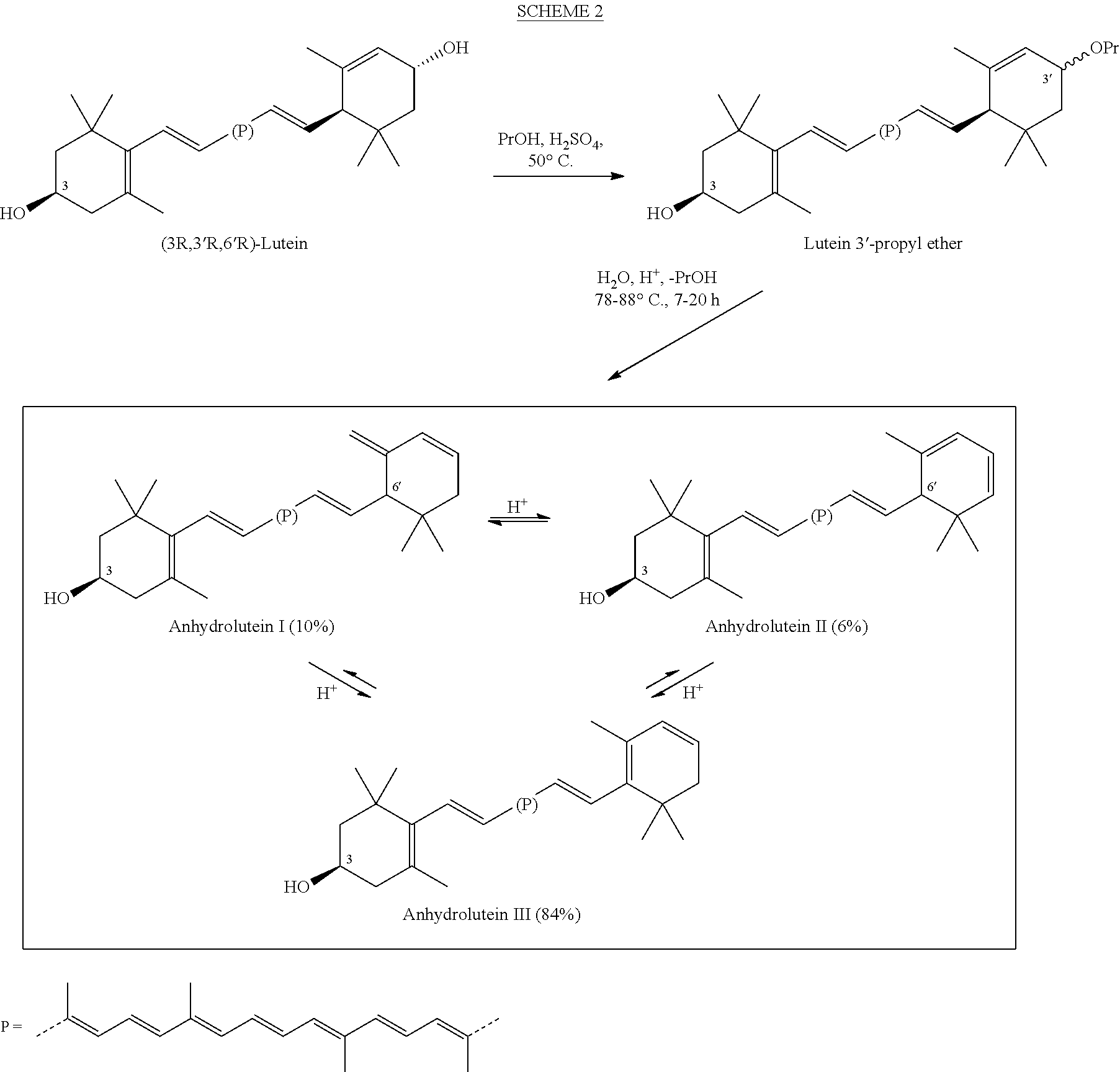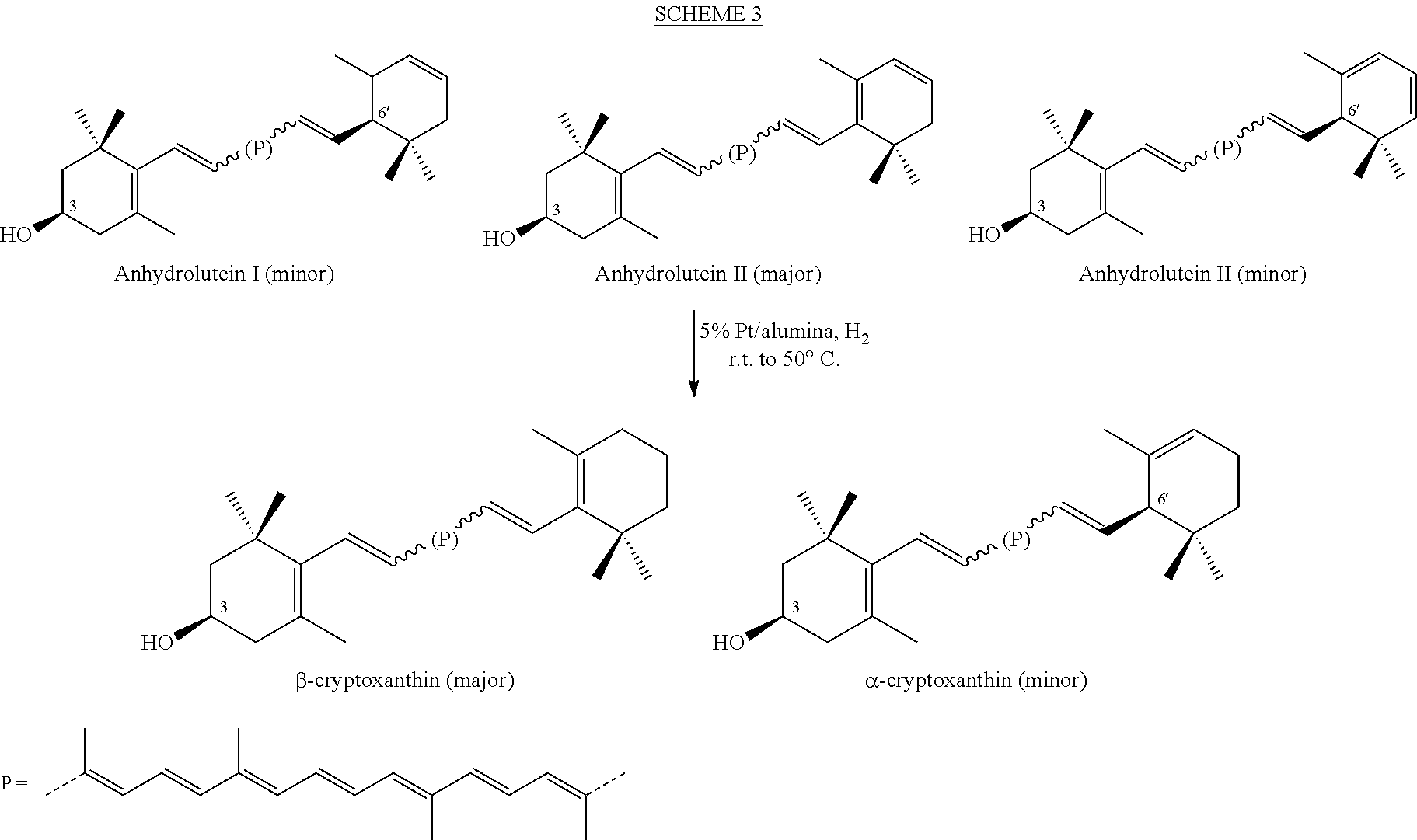Process for a direct one-pot transformation of lutein to beta-cryptoxanthin via its acetate ester
a technology of acetate ester and lutein, which is applied in the field of one-pot transformation of lutein to betacryptoxanthin via its acetate ester, can solve the problems of significant loss of desired carotenoids
- Summary
- Abstract
- Description
- Claims
- Application Information
AI Technical Summary
Problems solved by technology
Method used
Image
Examples
example 1
Conversion of Commercially Available Lutein to (3R)-β-Cryptoxanthin
[0080]A suspension of commercially available (3R,3′R,6′R)-lutein (10 g of 75% pure 7.5 g, 13.19 mmol) in ethyl acetate (150 mL) in a 500 mL 3-neck flask equipped with a gas inlet and a thermometer was stirred under nitrogen for 10 minutes. The flask was cooled to 10° C. and the mixture was treated with slow addition of 4.0 mL of a 50% aqueous solution of sulfuric acid (v:v, prepared from 2 mL of concentrated H2SO4 and 2 mL of water) in 10 minutes. The reaction mixture was allowed to warm to room temperature. Almost immediately, the suspension became a dark red solution. To the stirred solution was added platinum on alumina, 5% (250 mg) and a stream of hydrogen was passed 2 inches above the surface of the solution for 30 minutes. The reaction mixture was then sealed under hydrogen and was allowed to stir at room temperature for nearly 24 hours. At two intervals during the reaction, after 4 and 8 hours, hydrogen was pa...
example 2
Conversion of Lutein Esters in an Unsaponified Extract of Marigold Oleoresin to (3R)-β-Cryptoxanthin
[0083]An unsaponified extract of marigold oleoresin (6 g) in a 100 mL 3-neck flask equipped with a gas inlet and a thermometer was treated with 50 mL of a 5% solution of hydrochloric acid in ethanol (v:v) and the mixture was heated at 50-60° C. for 1-2 hours to remove the dark greenish anthocyanins and degradation products of chlorophylls. The solution was removed by decantation and the remaining dark red paste was washed with 10 mL of ethanol and the alcohol was decanted. This pre-treatment of the marigold oleoresin resulted in the removal of 1.3 g of anthocyanins from the oleoresin. The dark red paste was dissolved in ethyl acetate (30 mL) and stirred under nitrogen for 10 min. Pt / alumina, 5% (50 mg) was added followed by slow addition of a 50% (v / v) solution of sulfuric acid (1 mL). A stream of hydrogen was then passed 2 inches above the surface of the solution for 30 minutes and t...
example 3
Conversion of Lutein Esters in an Extract from Marigold Flower Petals to (3R)-β-Cryptoxanthin
[0084]Marigold flower petals (22 g) were transferred into a homogenizer and extracted with 200 mL of ethyl acetate at room temperature for 2 h. The dark red extract was filtered through Celite (filter aid) and the Celite was washed with 50 mL of ethyl acetate until it was colorless. The filtrate was transferred into a round bottom flask and most of the ethyl acetate was distilled under reduced pressure at 30-40° C. to dryness to give 3.2 g of an oleoresin. The total carotenoid content of this oleoresin measured by UV-Visible spectrophotometry was 0.416 g of lutein fatty acid esters. The oleoresin was transferred into a 100 mL 3 neck flask using 30 mL of ethyl acetate. Pt / alumina, 5% (25 mg) was added followed by slow addition of a 50% (v / v) solution of sulfuric acid (0.5 mL). A stream of hydrogen was then passed 2 inches above the surface of the solution for 30 minutes and the reaction flask...
PUM
| Property | Measurement | Unit |
|---|---|---|
| temperature | aaaaa | aaaaa |
| temperature | aaaaa | aaaaa |
| temperature | aaaaa | aaaaa |
Abstract
Description
Claims
Application Information
 Login to View More
Login to View More - R&D
- Intellectual Property
- Life Sciences
- Materials
- Tech Scout
- Unparalleled Data Quality
- Higher Quality Content
- 60% Fewer Hallucinations
Browse by: Latest US Patents, China's latest patents, Technical Efficacy Thesaurus, Application Domain, Technology Topic, Popular Technical Reports.
© 2025 PatSnap. All rights reserved.Legal|Privacy policy|Modern Slavery Act Transparency Statement|Sitemap|About US| Contact US: help@patsnap.com



